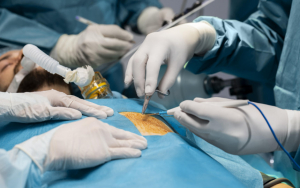The heart is one of the most hardworking and busiest organs of the human body. It pumps blood all day and night and many times gets tired and sick. To study, diagnose, and treat the illness a heart might suffer, the field of Cardiology is looked upon. Cardiology is that branch of biology which studies the human heart. The heart here includes the heart as well as the blood vessels.

A cardiologist is a person who treats disorders related to the cardiovascular system. A cardiologist is not the same as a cardiac surgeon as the surgeon has the permit to open the chest and perform heart surgery whereas the cardiologist can only treat the diseases of the cardiovascular system i.e. heart and the blood vessels.

Diseases treated by cardiologists include heart attack, heart failure, coronary artery diseases, arrhythmia, heart valve disease, congenital heart disease, pericardial disease, hypertension, etc.
For Best Cardiologists in India, Contact HTIndia.
A cardiologist can also give advice on how to prevent heart disease and a person can consult a cardiologist before making the decision of having heart surgery.
The cardiologist does a number of tests to check a patients’ heart situation like angioplasties, stenting, valvuloplasty’s, congenital heart defect corrections, and coronary thrombectomies.
Taking care of your heart is equal to taking care of the whole body as once the heart stops pumping, life gets over. If any person has a family history of heart disease, then he/she must visit a cardiologist at an early age to avoid any long-term problems. Having a healthy lifestyle, not subscribing to smoking, and eating junk and oily food is one of the best ways to avoid heart-related disorders and one must always adopt a healthy life over a stylish one.

Type of Heart Surgery
Coronary artery bypass grafting (CABG): this is one of the most common surgeries which is done when one of your arteries gets blocked. A healthy artery from outside is taken and it makes a new path for blood flow bypassing the damaged artery.

Heart valve repair or replacement: in case of valve failure, there can be the repair of the valve or replacement. Cow, pig, or human heart tissue are used.
Insertion of a pacemaker or an implantable cardioverter-defibrillator (ICD): in case a person’s pacemaker stops working, it is necessary to insert a new artificial pacemaker to control the heartbeat.
Heart transplant: in case the heart is fully damaged, it is replaced with a new heart from a deceased donor.
Insertion of a ventricular assist device (VAD) or total artificial heart (TAH).
– Coronary artery bypass grafting (CABG)
A coronary artery bypass graft (CABG) is a common operation used to treat coronary artery disease. The tapering of the coronary arteries — the blood channels that carry oxygen and nourishment to the heart muscle – is known as coronary artery disease (CAD).
A build-up of fatty material within the walls of the arteries causes CAD. This accumulation narrows the lumen of the arteries, limiting oxygen-rich blood flow to the heart muscle. The build-up of fatty deposits known as plaques can constrict and stiffen these arteries at the same time.
Atherosclerosis is the clinical term for this condition.
The plague collects in the coronary arteries. Plaque is a material circulating in the body that is made up of fat, cholesterol, calcium, and other chemicals.
The coronary arteries can narrow and impede blood flow to the heart muscle as plaque builds up.
Types of Coronary Artery Bypass Grafting:-
Traditional Coronary Artery Bypass Grafting Surgery
To bypass a blocked coronary artery, the doctor often makes a big cut in the chest and temporarily pauses the heart. The doctor uncovers the chest and slices the sternum in half lengthwise, spreading it to one side. Your doctor will expose your heart and implant tubes into it so that blood may be pumped across the body by a heart-lung bypass machine. While the heart is halted, the bypass machine is required to pump blood. Blood flow to the heart is reestablished post-surgery.
Coronary Artery Bypass Grafting Off-Pump
Because the chest bone is opened to reach the heart, CABG is indistinguishable from traditional CABG. However, the heart is not stopped, and there is no usage of heart-lung bypass equipment.
The procedure
A coronary artery bypass graft is a procedure that involves connecting a blood vessel from another region of the body (typically the chest, leg, or arm) to the coronary artery above and below the restricted section.
